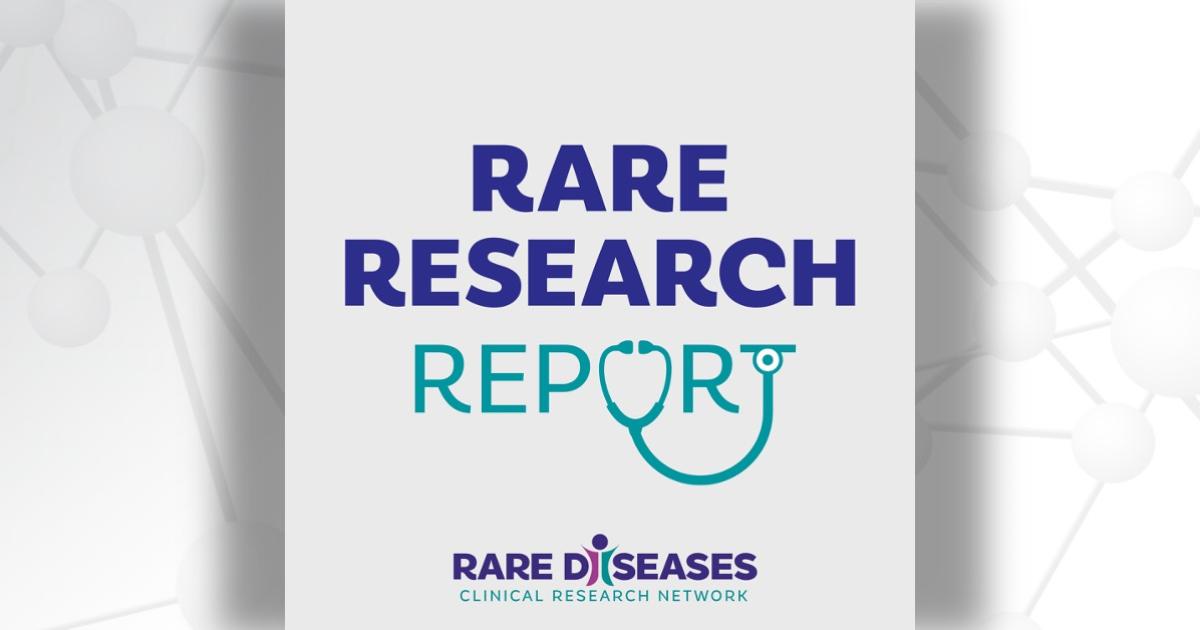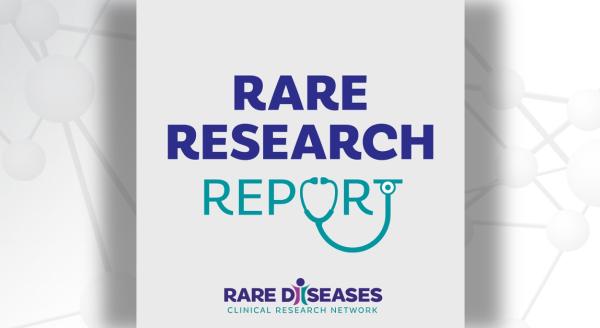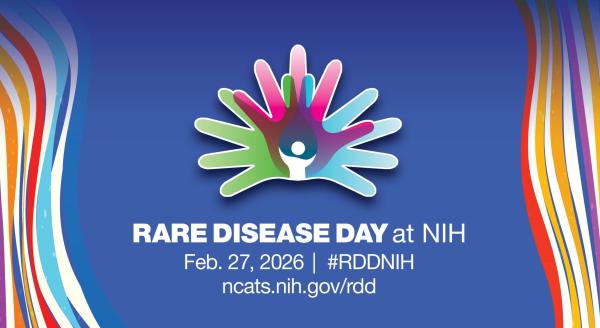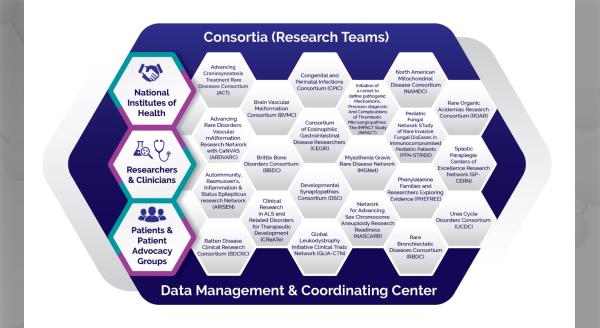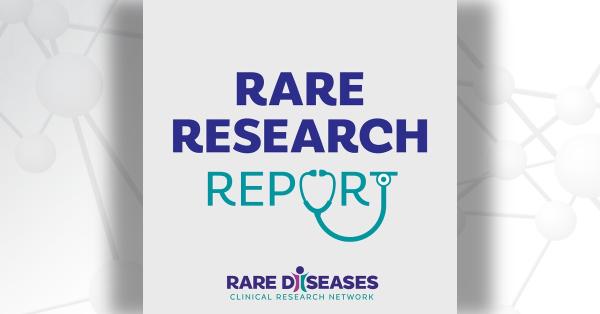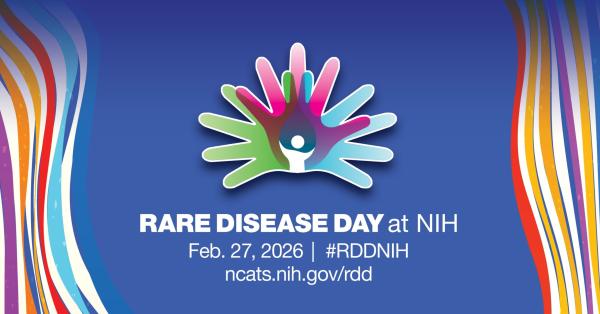Each month, we share summaries of recent Rare Diseases Clinical Research Network (RDCRN) grant-funded publications. Catch up on the latest RDCRN research below.
Jump to:
- Brain Vascular Malformation Consortium (BVMC)
- Global Leukodystrophy Initiative Clinical Trials Network (GLIA-CTN)
- Myasthenia Gravis Rare Disease Network (MGNet)
Listen to these summaries on the Rare Research Report podcast.
Brain Vascular Malformation Consortium (BVMC)
Comparing Circulating microRNAs in Neurovascular Disorders
Familial cerebral cavernous malformations (FCCM), Sturge-Weber syndrome (SWS), and hereditary hemorrhagic telangiectasia (HHT) are neurovascular disorders caused by genetic mutations that can lead to brain bleeding. Cerebral microbleeds (CMBs) are another type of neurovascular disorder that causes brain bleeding. However, CMBs are more often associated with the aging process than genetic factors.
In this study, researchers compared circulating microRNAs in these four neurovascular disorders. First, the team identified differentially expressed plasma microRNAs from patients with FCCM, SWS, HHT, and CMB. Next, they used analysis techniques to identify gene targets of the differentially expressed microRNAs and their associated pathways.
Results revealed both similarities and differences in microRNAs. Among all four disorders, dysregulated microRNAs targeted the PI3K-Akt and ROBO SLIT signaling pathways. Authors note that these findings reveal shared mechanistic pathways underlying vascular dysmorphism and bleeding, highlighting their potential use for disease monitoring and therapeutic intervention.
Koskimäki J, Jhaveri A, Srinath A, Bindal A, Vera Cruz D, Priyanka Yeradoddi G, Lightle R, Lee J, Stadnik A, Iqbal J, Alcazar-Felix R, Hage S, Romanos S, Shenkar R, Loeb J, Faughnan ME, Weinsheimer S, Kim H, Girard R, Awad IA. Common and distinct circulating microRNAs in four neurovascular disorders. Biochem Biophys Rep. 2025 Aug 2;43:102189. doi: 10.1016/j.bbrep.2025.102189. PMID: 40800603; PMCID: PMC12341739.
Global Leukodystrophy Initiative Clinical Trials Network (GLIA-CTN)
Examining the Molecular Mechanisms of Adult-Onset Leukoencephalopathy with Axonal Spheroids and Pigmented Glia
Adult-onset leukoencephalopathy with axonal spheroids and pigmented glia (ALSP) is a neurodegenerative disorder that affects the white matter of the brain. ALSP is caused by mutations in the CSF1R gene, which provides instructions for making a protein called the colony-stimulating factor 1 receptor (CSF1R). This protein plays a crucial role in the growth and survival of immune cells in the brain called microglia.
In this study, researchers examined the molecular mechanisms of ALSP. The team performed single-nucleus RNA sequencing on brain specimens with and without ALSP.
Results revealed distinctive characteristics of ALSP brains, including significantly lower amounts of microglia and impaired maintenance of brain white matter. Authors note that these findings highlight potential therapeutic strategies for ALSP and other genetically caused microgliopathies.
Du S, Zhou Y, Li D, Lier J, Cella M, Tada M, Hamasaki H, Wu J, Cai Z, Orthmann-Murphy JL, Kakita A, Kipnis J, Bergner CG, Colonna M. Mutations in the human CSF1R gene impact microglia's maintenance of brain white matter integrity. Nat Immunol. 2025 Jul;26(7):1198-1211. doi: 10.1038/s41590-025-02195-7. Epub 2025 Jun 26. PMID: 40571738.
Myasthenia Gravis Rare Disease Network (MGNet)
Exploring the Effect of Atypical B Cells on Immune Response in Myasthenia Gravis
Myasthenia gravis (MG) is a neuromuscular disorder caused by an autoimmune response which blocks or damages acetylcholine receptors (AChR) in muscles, causing disabling weakness. Subtypes of MG—AChR-positive MG and muscle-specific kinase (MuSK)-positive MG—have different immune responses that may be caused by atypical B cells, an emerging subset of immune cells implicated in autoimmunity.
In this study, researchers explored the effect of atypical B cells on immune response in MG. The team used spectral flow cytometry to analyze atypical B cells in individuals with AChR-MG and MuSK-MG as well as healthy controls.
Results revealed that MG subtypes show distinct atypical B cell profiles that are linked to immunopathology and disease onset. Authors note that these findings highlight the potential for atypical B cells as therapeutic targets in both immunoglobin G1-3- and immunoglobin G4-mediated autoimmunity.
Sikorski PM, Kaminski HJ, Vincent A, Bauman T, Jacobson L, Kusner LL. Subtype-specific atypical B cell profiles in myasthenia gravis reveal distinct immunopathological pathways. Front Immunol. 2025 Jun 18;16:1608160. doi: 10.3389/fimmu.2025.1608160. PMID: 40607384; PMCID: PMC12213399.
Investigating Pathogenic Properties of Acetylcholine Receptor Autoantibodies in Myasthenia Gravis
Myasthenia gravis (MG) is a neuromuscular disorder caused by an autoimmune response which blocks or damages the neuromuscular junction in muscles, causing disabling weakness with characteristic fluctuation in severity over time. The most common form of MG is caused by acetylcholine receptor (AChR) autoantibodies, which either block the AChR, increase their removal from the muscle surface, or block complement.
In this study, researchers investigated the pathogenic properties of AChR autoantibodies in MG and whether they varied over time in relationship to severity of disease. The team analyzed serum specimens from 50 patients with MG collected every six months for two years. Next, they used live cell-based assays to measure AChR autoantibody isotypes, immunoglobulin G subclasses, and the nature of the pathogenic mechanisms.
Results showed that the pathogenic mechanisms of the antibodies fluctuated over time and were generally not associated with disease severity. Authors concluded that additional studies of autoantibody pathogenicity should be incorporated into MG clinical trials to assess differential treatment responses.
Khani-Habibabadi F, Roy B, Pham MC, Obaid AH, Filipek B, Nowak RJ, O'Connor KC. AChR Autoantibody Pathogenic Properties Are Heterogeneously Distributed and Undergo Temporal Changes Among Patients With Myasthenia Gravis. Neurol Neuroimmunol Neuroinflamm. 2025 Sep;12(5):e200436. doi: 10.1212/NXI.0000000000200436. Epub 2025 Jul 18. PMID: 40680247; PMCID: PMC12275905.
The Rare Diseases Clinical Research Network (RDCRN) is funded by the National Institutes of Health (NIH) and led by the National Center for Advancing Translational Sciences (NCATS) through its Division of Rare Diseases Research Innovation (DRDRI). Now in its fifth five-year funding cycle, RDCRN is a partnership with funding and programmatic support provided by Institutes, Centers, and Offices across NIH, including the National Institute of Neurological Disorders and Stroke, the National Institute of Allergy and Infectious Diseases, the National Institute of Diabetes and Digestive and Kidney Diseases, the Eunice Kennedy Shriver National Institute of Child Health and Human Development, the National Institute of Arthritis and Musculoskeletal and Skin Diseases, the National Heart, Lung, and Blood Institute, the National Institute of Dental and Craniofacial Research, the National Institute of Mental Health, and the Office of Dietary Supplements.

